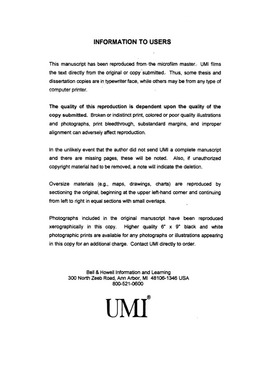| dc.contributor.advisor | Stalford, Harold L., | en_US |
| dc.contributor.author | Kuehn, Jeffrey Lee. | en_US |
| dc.date.accessioned | 2013-08-16T12:31:12Z | |
| dc.date.available | 2013-08-16T12:31:12Z | |
| dc.date.issued | 2001 | en_US |
| dc.identifier.uri | https://hdl.handle.net/11244/6058 | |
| dc.description.abstract | The dissertation presents the development and experimental validation of control laws that provide stable closed-loop behavior and good performance for semi-active control systems with nonlinear actuator dynamics. In particular, the work treats variable orifice hydraulic semi-active actuators installed on a structure subjected to seismic motions. A new dynamic model is developed for the variable-orifice hydraulic semi-active actuator that treats laminar, turbulent and transition flow. A quickest descent Lyapunov method is used to develop the semi-active control law. The resulting controller provides stability for semi-active systems with actuator dynamics that satisfy two general conditions. These conditions cover a wide variety of semi-active devices. This solution to the stability problem and is one of the major results of this dissertation. | en_US |
| dc.description.abstract | The response characteristics of the quickest descent Lyapunov controller are also demonstrated experimentally. A test structure outfitted with a variable orifice semi-active actuator is excited using a uniaxial electro-hydraulic seismic motion simulator. The experimental work demonstrates that the quickest descent control design technique is a valuable tool for designing stable semi-active control laws that exhibit good performance against realistic seismic inputs. | en_US |
| dc.description.abstract | After treating the stability problem, the performance of the quickest descent controller is investigated for bounded disturbance inputs. A theorem is provided to establish a ball of ultimate boundedness (stable attractor) based on the upper bound of the disturbances. Simulation results using a variety of disturbance inputs are provided to demonstrate the effectiveness of the quickest descent control law. The results indicate that the guaranteed performance (i.e., bound of the stable attractor) is too conservative by two orders of magnitude for the best performing controller. This opens up a new problem for future researchers on how to construct less conservative performance bounds. | en_US |
| dc.description.abstract | Semi-active control is a promising technology for reducing undesirable vibrations in structures. To determine closed loop stability and performance for such systems, past efforts have utilized linear control synthesis and analysis techniques, neglecting any nonlinear actuator dynamics. An open problem in the literature is establishing the stability of semi-active control systems with nonlinear actuator dynamics. The main focus of this dissertation is on that open stability problem. | en_US |
| dc.format.extent | xx, 127 leaves : | en_US |
| dc.subject | Engineering, Mechanical. | en_US |
| dc.subject | Earthquake resistant design. | en_US |
| dc.subject | Actuators. | en_US |
| dc.subject | Vibration Research. | en_US |
| dc.title | Semi-active structural control systems with nonlinear actuator dynamics: Design, stability analysis, and experimental verification. | en_US |
| dc.type | Thesis | en_US |
| dc.thesis.degree | Ph.D. | en_US |
| dc.thesis.degreeDiscipline | School of Aerospace and Mechanical Engineering | en_US |
| dc.note | Source: Dissertation Abstracts International, Volume: 61-11, Section: B, page: 6097. | en_US |
| dc.note | Adviser: Harold L. Stalford. | en_US |
| ou.identifier | (UMI)AAI9994072 | en_US |
| ou.group | College of Engineering::School of Aerospace and Mechanical Engineering | |
